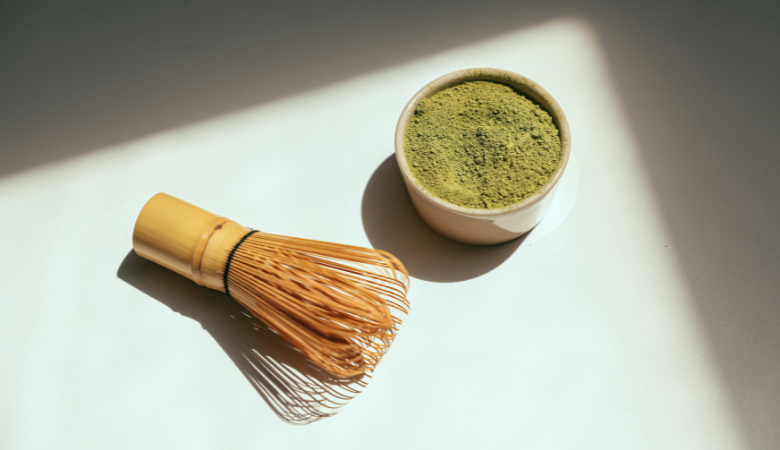
How Does Matcha Taste? (+ Tips for Making It More Flavorful)
|
|
Time to read 5 min
This store requires javascript to be enabled for some features to work correctly.
|
|
Time to read 5 min
Are you curious about matcha's taste? Maybe you've seen the vibrant green powder and wondered what it's like on your taste buds.
You’re asking the right questions!
Matcha is well known for offering an aromatic, earthy, velvety experience that’s been savored by ancient cultures and modern tea lovers alike. Together, let’s explore the flavors of matcha and share some tips on how to make it even more delightful.
Table of Contents
Matcha boasts a complex flavor profile with earthy, umami, bitter, and sweet notes, offering a unique and harmonious taste experience.
The quality of matcha significantly affects its taste, so investing in high-quality matcha powder can make your matcha-drinking experience smoother and more enjoyable.
Experiment with various preparation techniques, including whisking, water temperature, sweeteners, and flavor infusions, to tailor matcha's flavor to your preferences and discover its full potential.
Before we dive into the taste, let's quickly understand what matcha is. Matcha is a special type of powdered green tea, originally from Japan. It's known for its vibrant color, earthy aroma, and unique preparation method.
Unlike traditional green tea, which is steeped and strained, matcha is made from shade-grown tea leaves that are ground into a fine powder, which is then whisked into hot water. Because matcha contains the entire tea leaf, it has a thicker, velvety consistency that’s richer than regular green tea and far more flavorful.
So, what’s matcha taste like? The flavor is hard to describe in just a few words. Let’s dive in:
Matcha has a distinct and complex flavor profile that can be described as:
Keep in mind that the taste of matcha can vary based on its quality. Higher-quality matcha tends to be less bitter and more vibrant in color. It's worth investing in good-quality matcha if you want a smoother and more enjoyable taste. The quality of matcha also impacts its texture, and higher quality matcha will be finer in texture and provide a smoother mouthfeel.
Now that you have an idea of matcha's taste, let's explore how to make it even more flavorful and enjoyable.
Invest in premium matcha powder. Quality matters. Look for vibrant green color and a fresh, grassy aroma. Avoid matcha that looks dull or has a yellowish hue.
To achieve a smooth, frothy cup of matcha, master the whisking technique. Use a bamboo whisk (chasen) and whisk in a "W" motion. This ensures that the powder fully dissolves and the flavors meld.
Use water that's not boiling hot, around 175°F (80°C). Boiling water can make matcha taste bitter. Give it a minute to cool slightly before pouring it over the powder.
If you prefer a sweeter matcha, add a touch of honey or maple syrup. Keep it light, as the natural sweetness of matcha should shine through.
Try matcha lattes by adding steamed milk. The creaminess complements matcha's bitterness, creating a delightful contrast.
Get creative with flavor infusions. Add a dash of vanilla extract, a pinch of cinnamon, or grated ginger for a unique twist.
Matcha isn't just for drinking. You can use it in various recipes, from smoothie bowls to baked goods. It can lend a subtle matcha essence to your dishes.
In the world of tea, matcha stands out with its distinctive taste. Its earthy, umami-rich, slightly bitter, and subtly sweet flavors create a harmonious symphony on your taste buds. Remember, the quality of matcha and how you prepare it can significantly impact its taste.
Experiment, savor, and enjoy this green elixir. Whether you like it traditionally whisked with hot water or blended into a vibrant smoothie, matcha has a flavor that's truly one-of-a-kind. So, go ahead and discover the captivating taste of matcha for yourself.
In a world where demands never cease, we've crafted a blend that caters to your cognitive needs. Our Mushroom+Nootropic Matcha combines the centuries-old wisdom of matcha tea with the modern science of nootropics and the power of adaptogenic mushrooms.
Each sip delivers a balanced fusion of earthy matcha, rich in antioxidants, with brain-boosting nootropics that sharpen your mental clarity. But that's not all. We've harnessed the adaptogenic prowess of mushrooms like Lion's Mane and Cordyceps to combat stress, amplify your energy, and bolster your immune system.
Lucid Nootropic+ Mushroom Matcha isn't just a drink; it's a lifestyle. Whether you're conquering the boardroom or embarking on a creative journey, this elixir provides the sustained vitality you need.
Elevate your daily ritual. Embrace the Lucid lifestyle. It's time to unlock your limitless potential with each mindful sip.
Many people find matcha’s earthy, slightly sweet flavor refreshing and enjoyable. Its vibrant green color and smooth, creamy texture make it a popular choice among nootropic beverages enthusiasts seeking both flavor and focus.
Matcha’s flavor is often compared to green tea, but it’s more concentrated and has a richer, umami character with a touch of natural sweetness.
For some, matcha’s bold, earthy taste can be an acquired one. Over time, many people learn to appreciate its complex flavors, especially when paired with healthy benefits like matcha for skin support.
Matcha is popular among women because it aligns with wellness trends, supports metabolism, and may even aid in skin health. Its natural antioxidants can help combat free radicals, making it a popular choice for those looking to glow from the inside out.
Yes, it’s generally safe to drink matcha daily in moderate amounts. Like green tea, it’s rich in antioxidants and can be a healthy addition to your routine. Just be mindful of its caffeine content.
Some people report that matcha can help reduce bloating thanks to its mild diuretic effects and antioxidants. While it’s not a guaranteed solution, it can be a beneficial addition to a balanced diet.